How to Draw a Winter Landscape
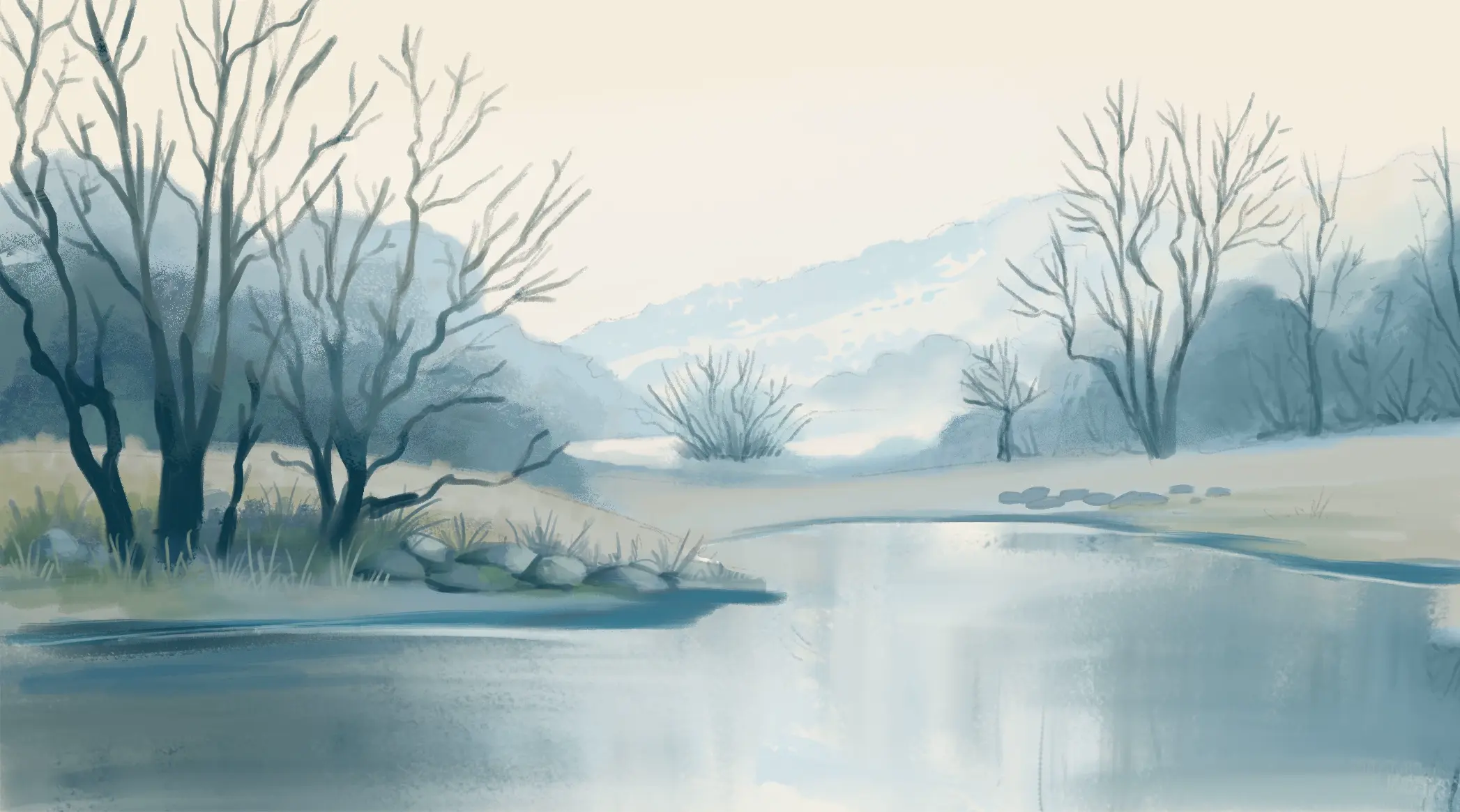
Hello everyone, today I'm going to teach you how to draw a winter landscape. In this article, you will see that it's not always necessary to draw snow to convey this season. Just a few well-chosen elements are enough to evoke a wintry atmosphere. You will see, it's easier than it seems!
Get your pencils, your paper or your tablet ready, and most importantly, your creativity! Let's dive in!
The visual codes of a winter landscape

Before drawing, there is an essential step: observation. Take the time to look around you (or online) to discover what really characterizes a season. As I mentioned earlier, we are not necessarily going to depict snow, and yet, some of the reference photos contain it. It may seem as if there is no consistency here, but it is intentional. When trying to illustrate a season, you often start with what it most obviously evokes, what is almost cliché.
It is a simple and effective way to create an immediate connection with the viewer, by tapping into the collective imagination. And for winter, this strong visual cue is snow. It is anchored in our visual memory and it speaks to everyone.
But winter isn't just about snow. It doesn't snow everywhere, nor all the time. Therefore, it is interesting to expand our palette of visual clues to evoke this season in a different manner. For instance, bare trees, foggy landscapes, wan light, or icy ground are all elements that can convey the feeling of winter. Even details like steam escaping from a sewer or salt tracks on a road can contribute to this atmosphere.
By observing what happens around us in winter — even a snowless winter — we discover a multitude of small things which, when pieced together, create a quite recognizable atmosphere.
However, if you still want to learn how to depict snow, then I suggest you take a look at the article on how to draw snow or how to draw a snow-covered tree.
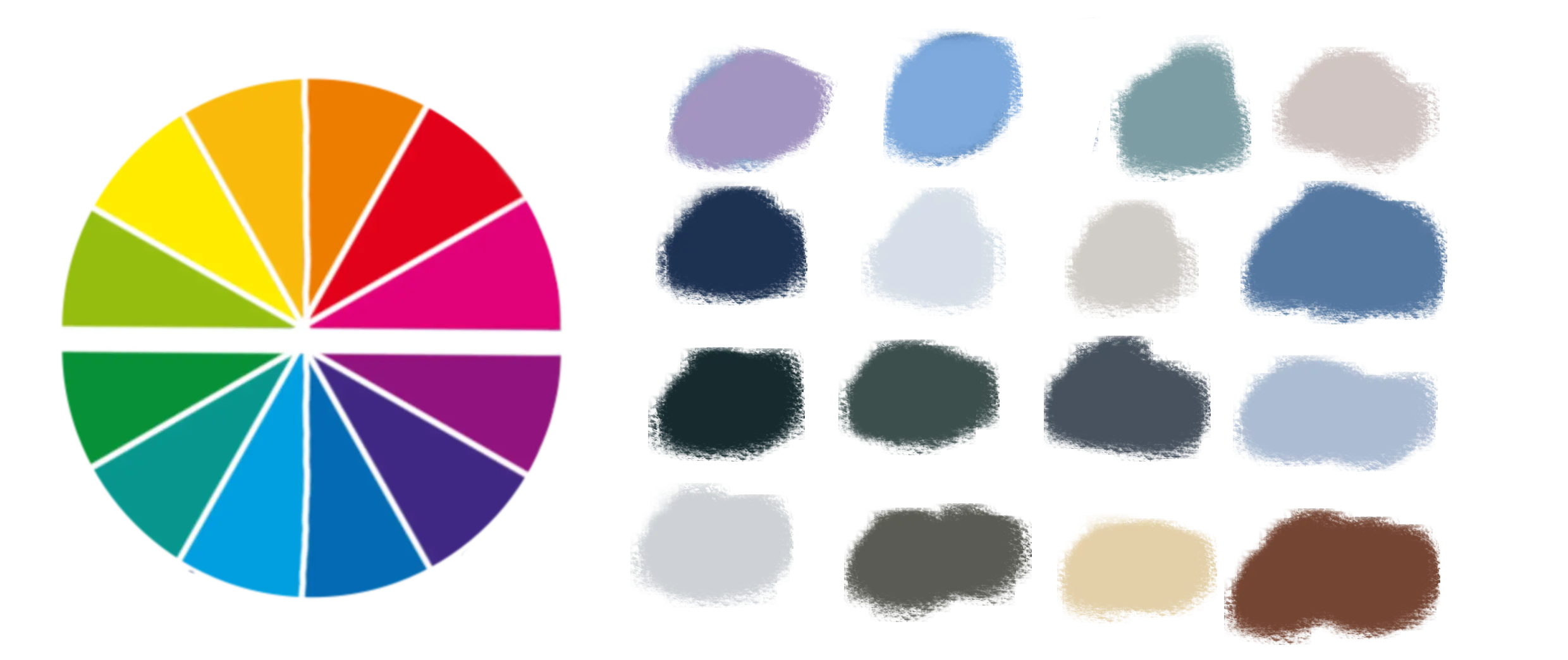
We haven't really talked about it yet, but one of the essential aspects of winter is its color palette. If you carefully observe the reference photos above, you will notice that most of the shades, whether light or dark, belong to a range of cool colors (at the bottom of the color wheel). Even colors that are ostensibly warmer, like brown, tend more towards violet or blue than red or orange.
This is a crucial point to remember: if you use a palette that is too warm and bright, your landscape will lose coherence and will no longer convey the sensation of winter as effectively. To maintain a believable ambiance, the colors must contribute to the atmosphere as much as the shapes and decorative elements.
A small reminder on this topic: even in photos where snow is present, you will notice that it is never pure white. And with good reason, absolute white does not exist in nature. It is always tainted, influenced by ambient light, the environment or the sky. What we perceive as "white" is actually made up of very light shades, often leaning towards gray, beige, or very pale blues. You will therefore need a whole range of desaturated and cold colors, including beige, gray, and blue.
Drawing a winter landscape: from sketch to color application
I suggest that you discover how to draw a winter landscape step by step. Feel free to choose some reference photos to guide you in choosing colors. I also advise you to exaggerate some cold shades: imagine that you are applying a slight icy blue filter over your entire image. This will enhance the atmosphere and help more clearly convey the feeling of winter.
For this step-by-step drawing, I've chosen to start with a natural landscape, but this approach works just as well for any type of setting.
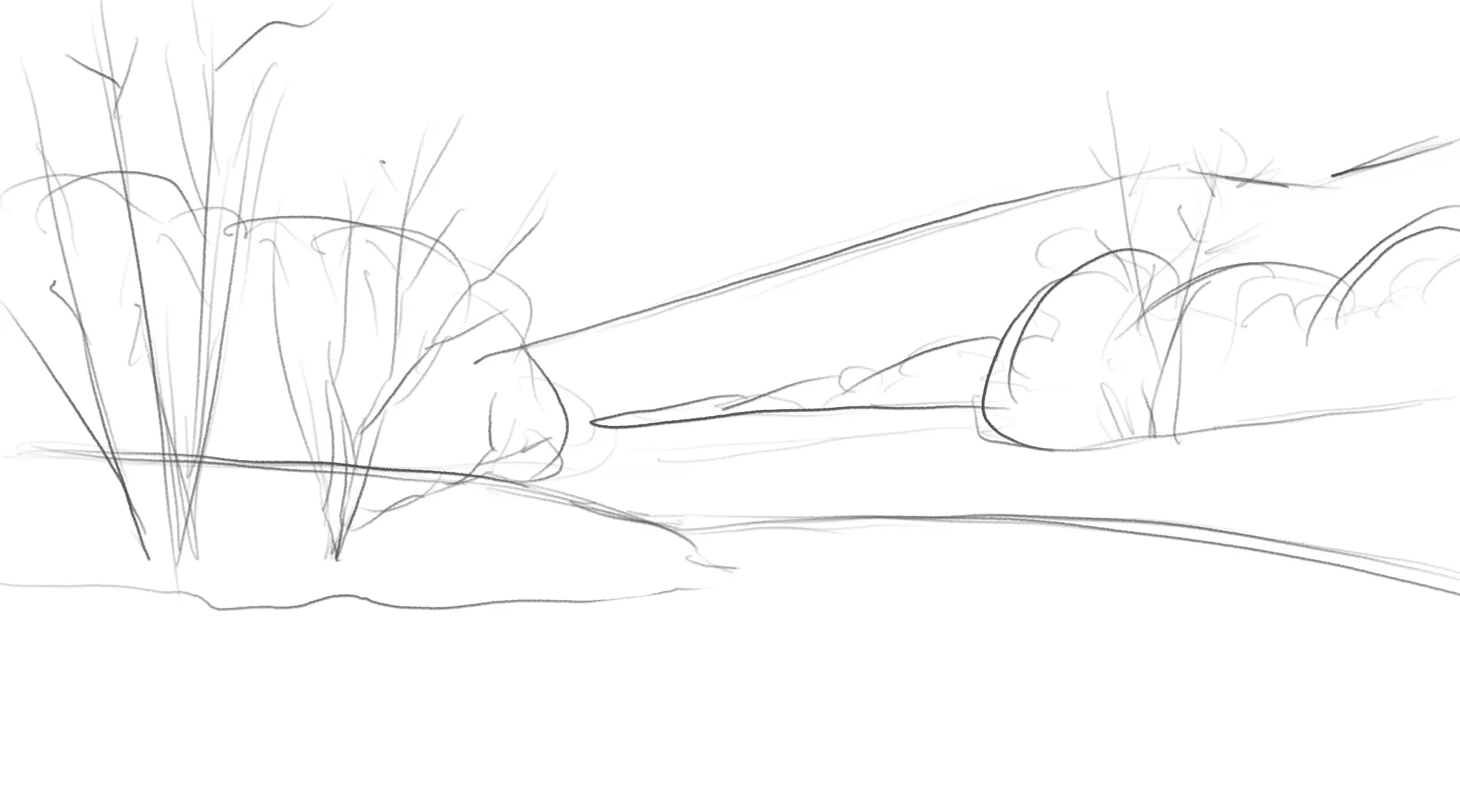
We start by making a quick sketch of the landscape. This will enable us to position the different elements. I decided to go with a setting that includes a few bare trees and a frozen lake in order to evoke winter. In the background, there will be more trees and mountains.
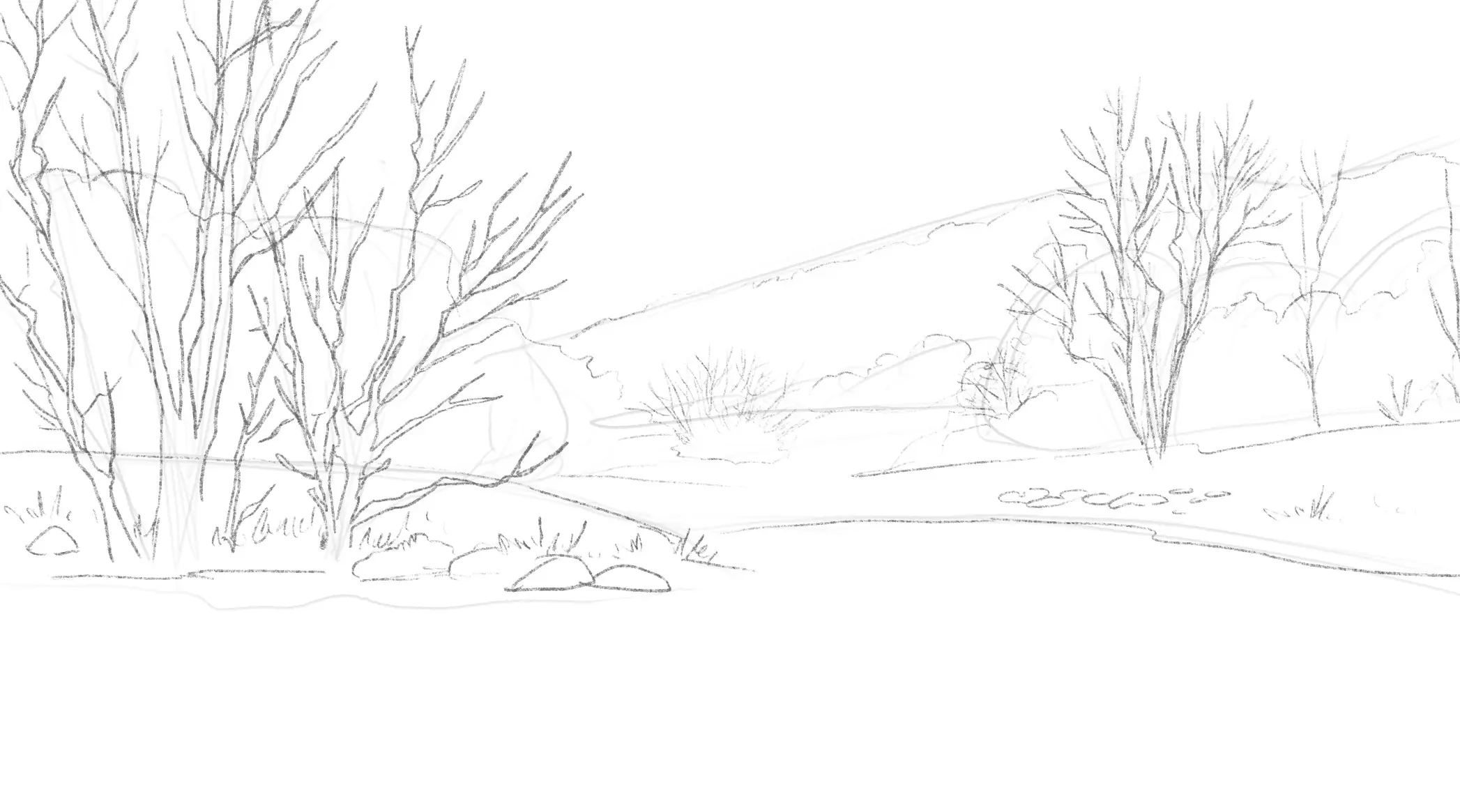
Once the elements are laid out and the overall composition is approved, we can move on to a cleaner and more detailed sketch in order to better visualize all the elements that will construct the landscape.
Adding color to your drawing
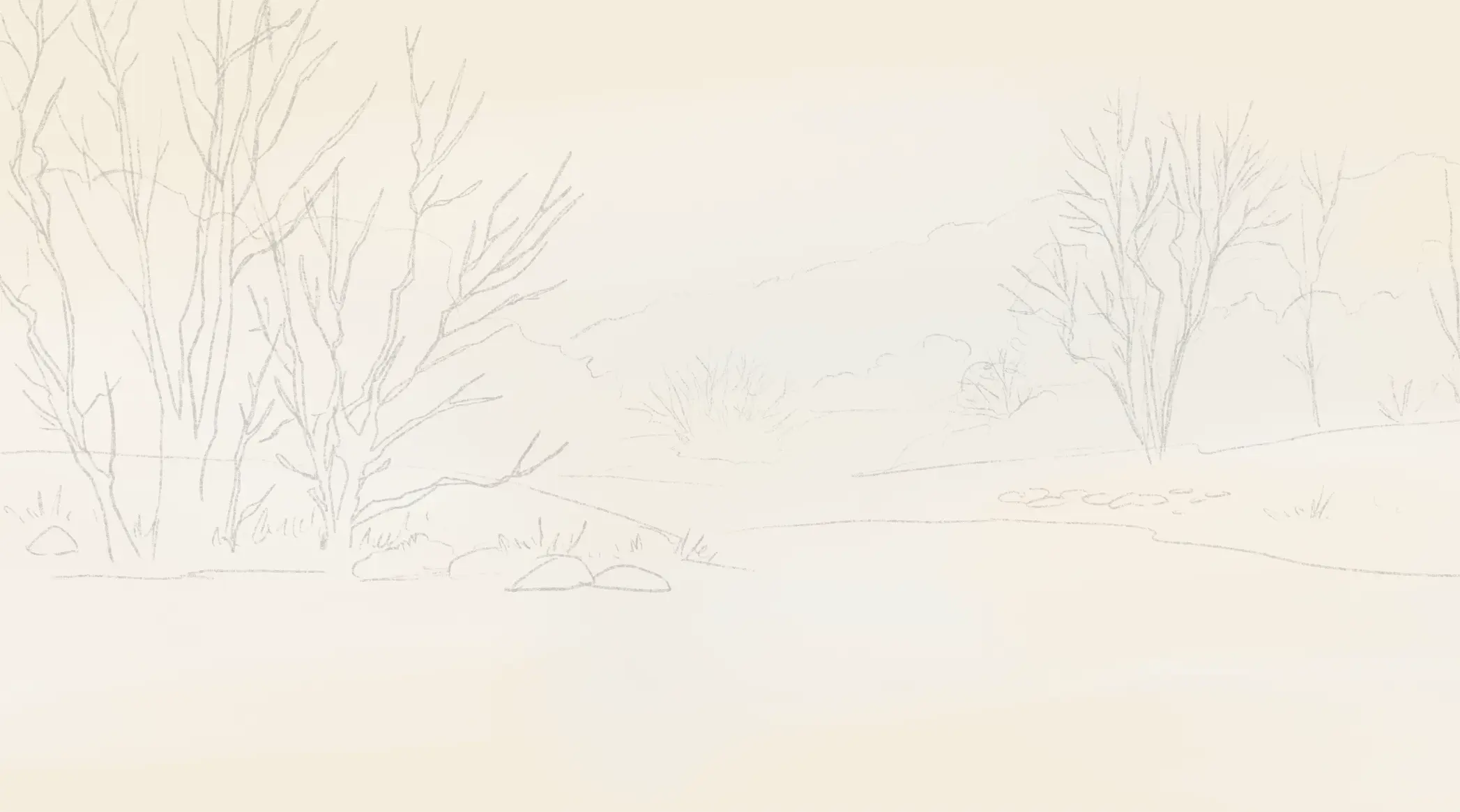
It's time to move on to color. To begin, I use a yellow and a very light beige to tint the paper. These will be the lightest shades used.
You can also choose to work on a pre-tinted sheet, especially if you decide to work with dry pastels or colored pencils. This will prevent you from creating a very large flat color and saturating the sheet from the start.
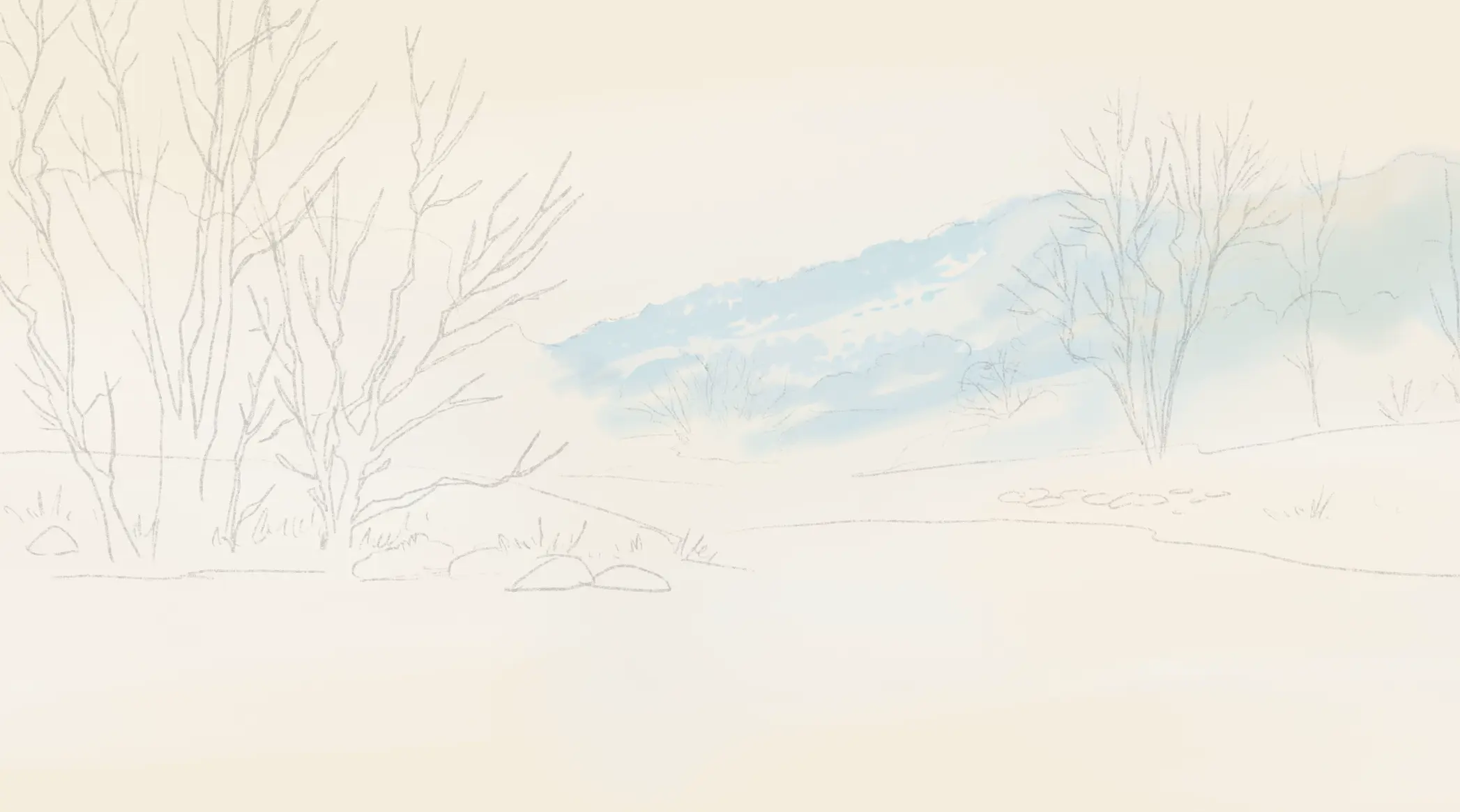
Now, using a light blue and a light gray, I'm suggesting mountains in the background. It is not necessary to draw something precise; the idea is to create visual interest by alternating filled and empty areas.
I tend to work with rounded shapes at the bottom (suggesting trees) and pointed shapes at the top of the mountains, to suggest rugged rocks.
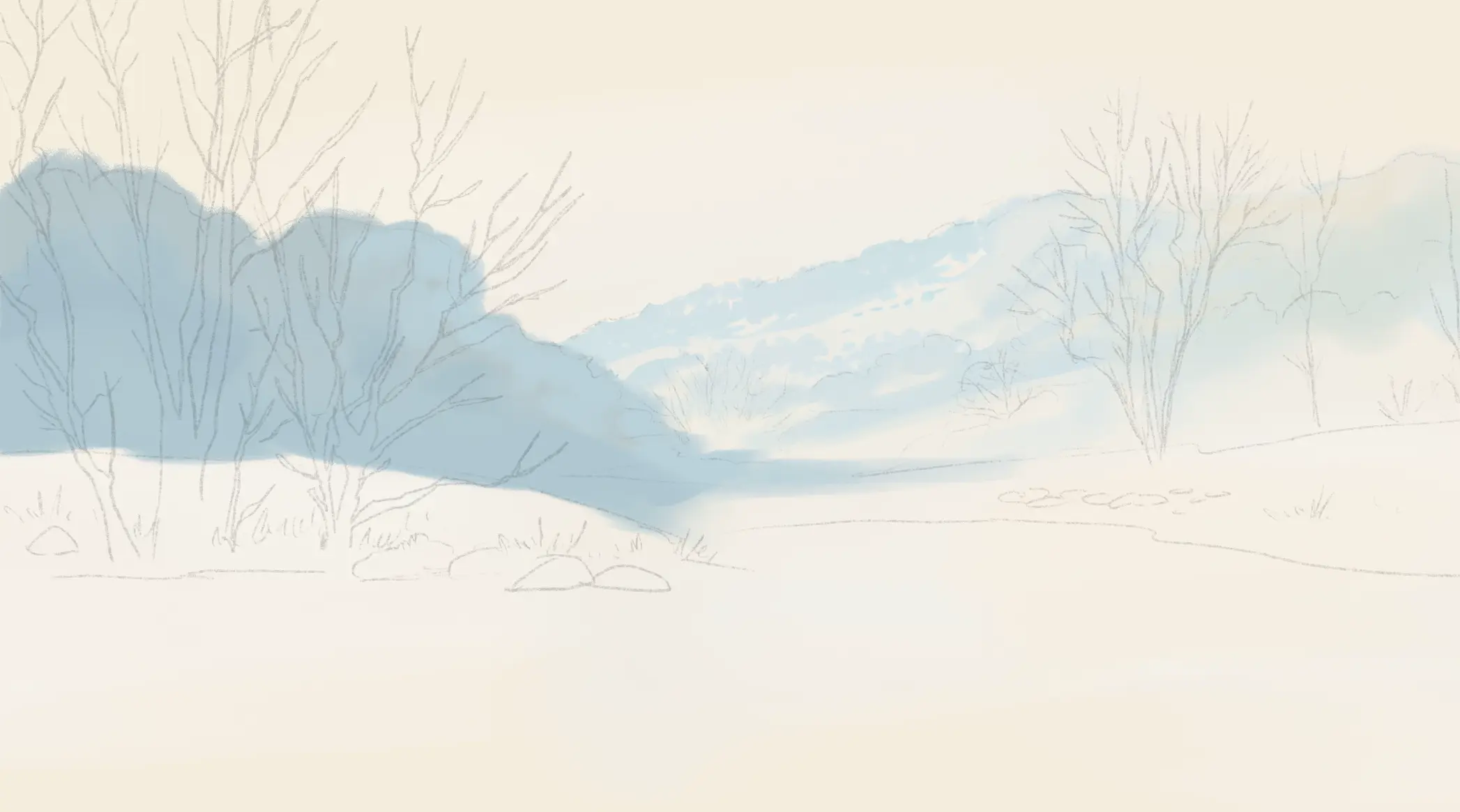
Next, we work on a closer plan with the group of trees on the left. They will be more in the background in the final drawing. So, I use a slightly darker blue and gray than those used for the mountain background, to indicate that they are closer to us.
I alternate between these two colors to create variations in intensity that suggest details without precisely drawing them.
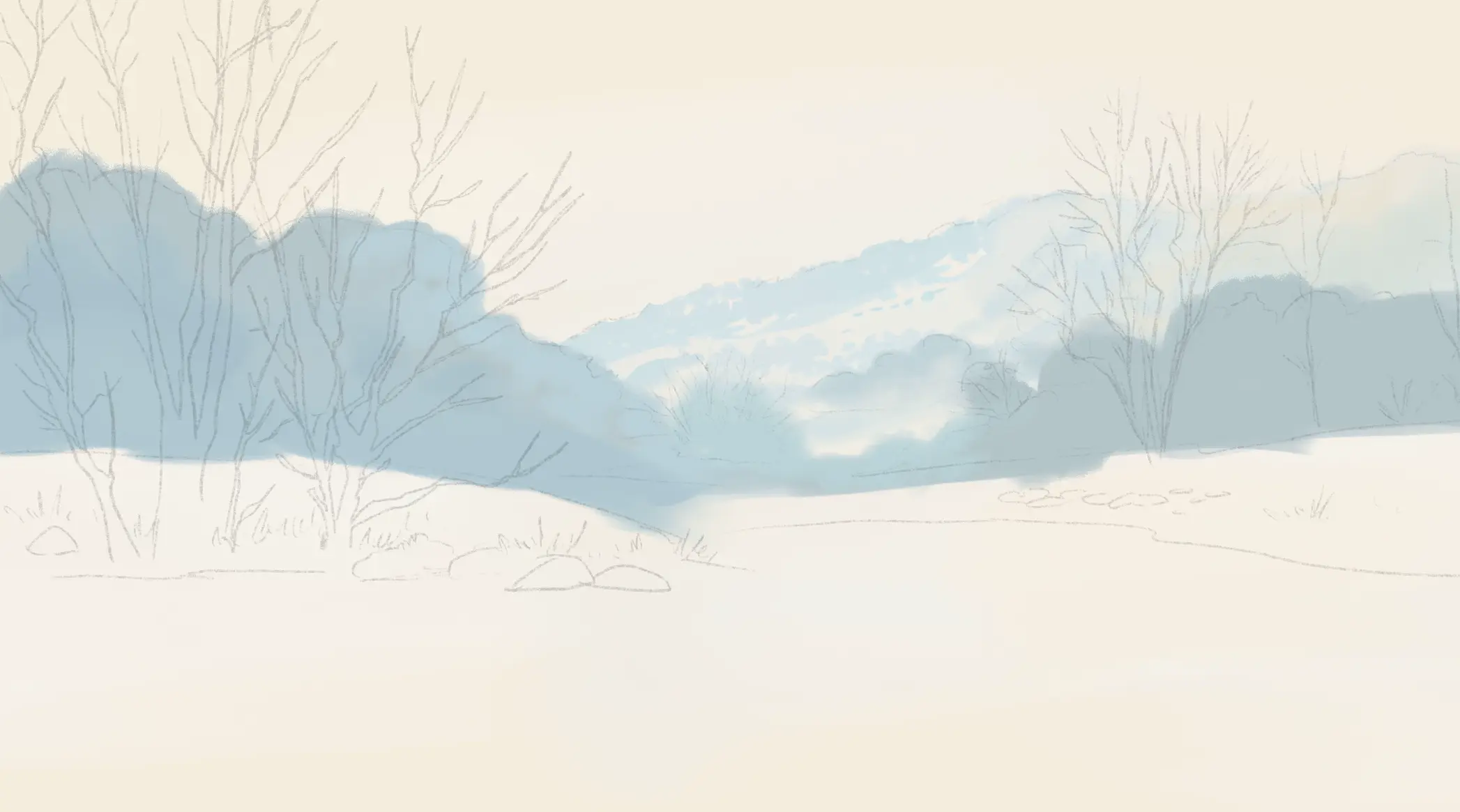
I do the same thing with the trees on the right. Since these are more bush-like trees, I work only with rounded shapes.
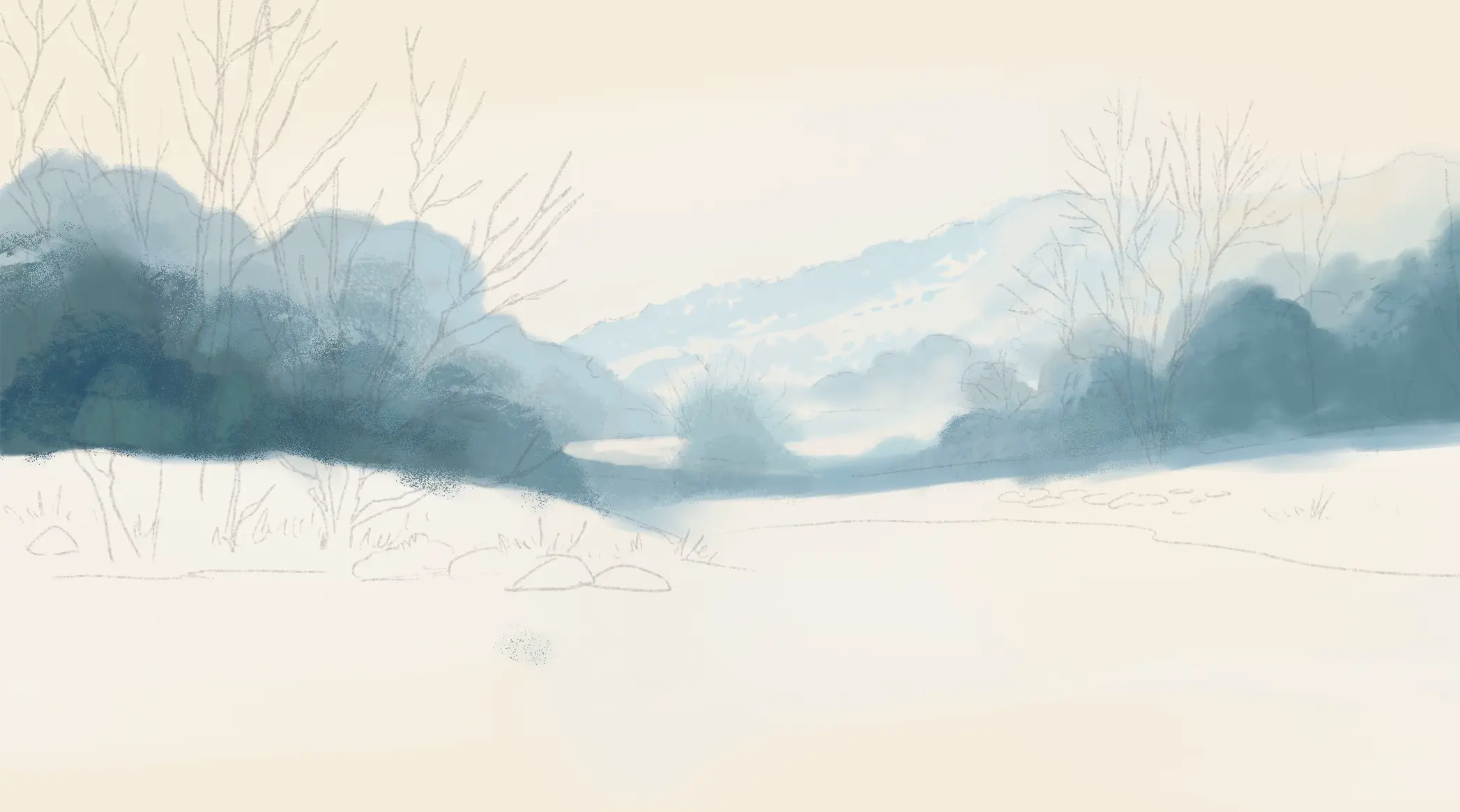
I add depth by creating a second row of trees on each side. I use an even darker blue and gray, and this time I suggest more details, especially on the top of the foliage.
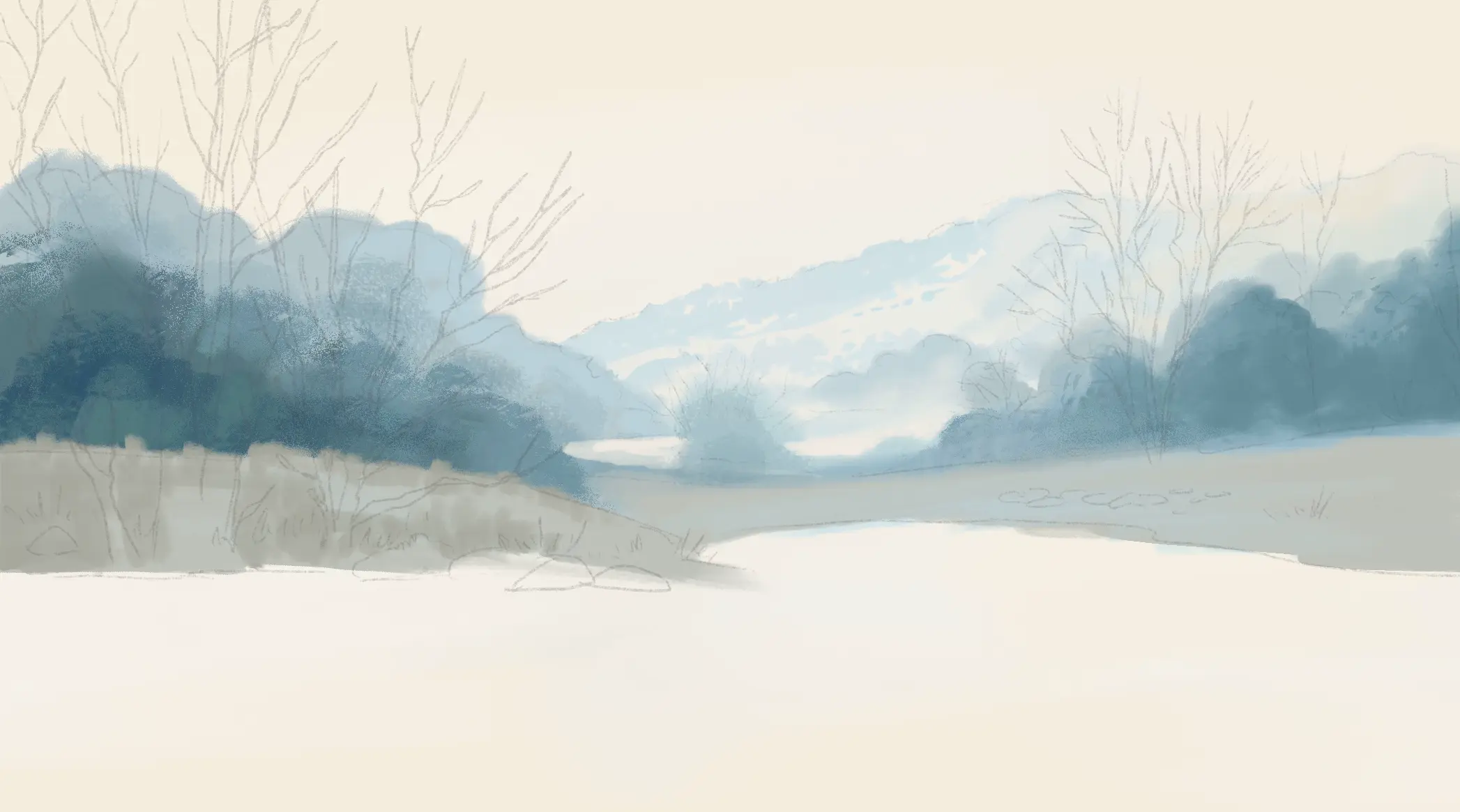
I am now starting to tackle the ground in front. I use gray and beige, and, as with the rest, I mix the colors. This time, I work vertically to suggest grass.
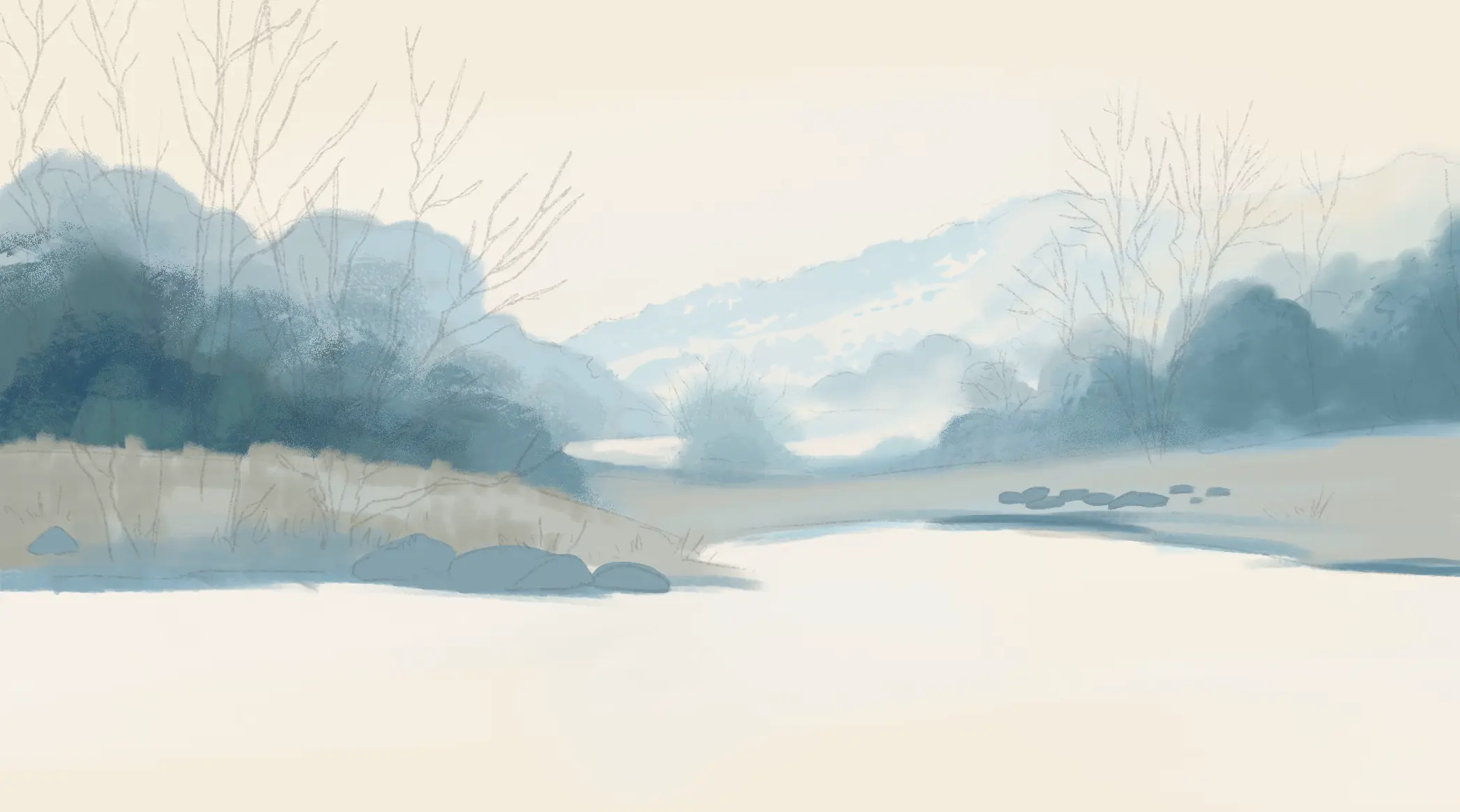
I am working on the rocks with blue and gray, trying to blend the colors in places to slightly contrast the ground, and I'm creating depth on the right, which will be the edge of the frozen pond.
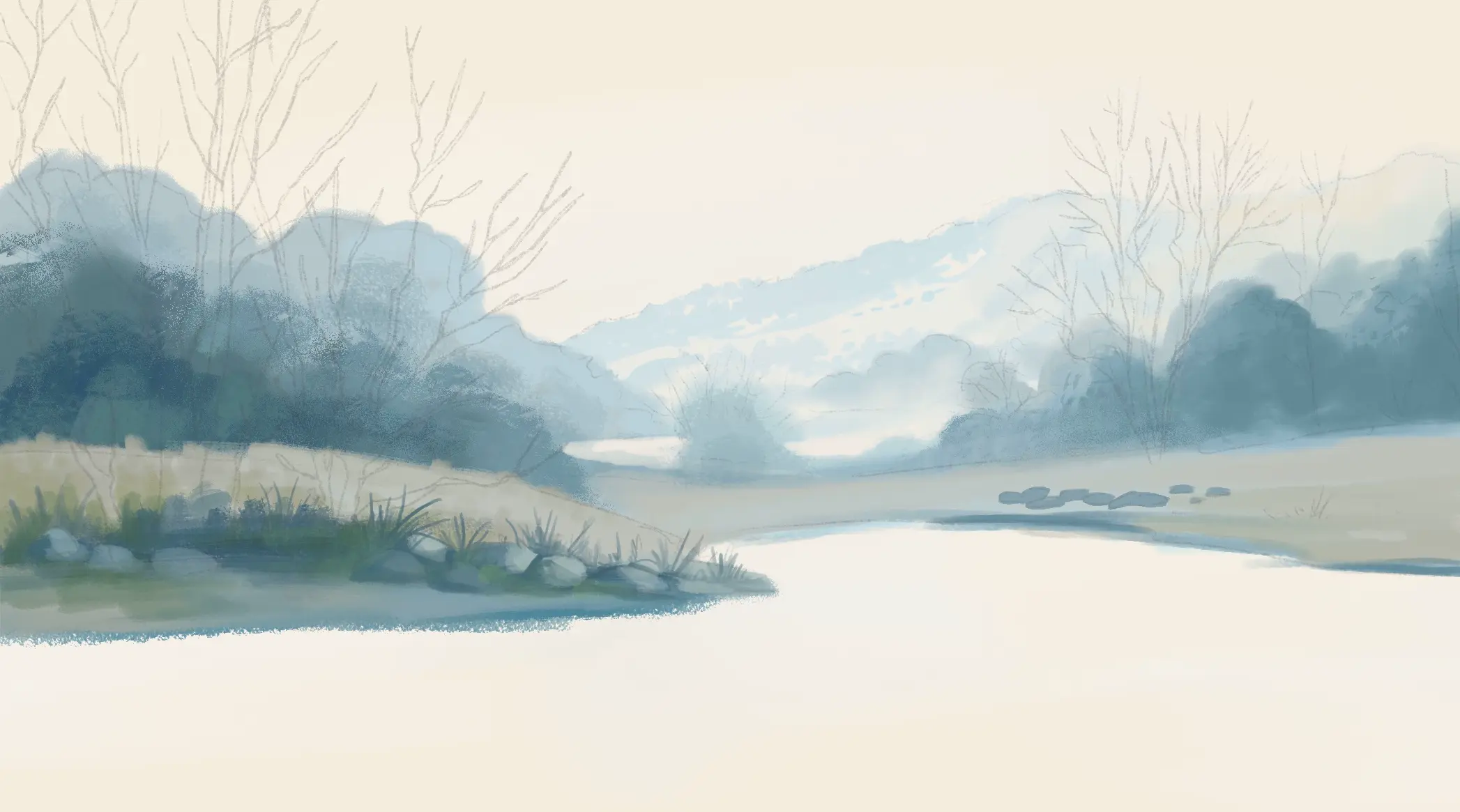
Now I'm going to add more contrast and visual interest to the left side of the canvas by using a dark green and khaki. With these details, the landscape, which was just suggested until now, gains coherence. This shows that in reality, if the background is blurry, it is because there is mist that softens the details.
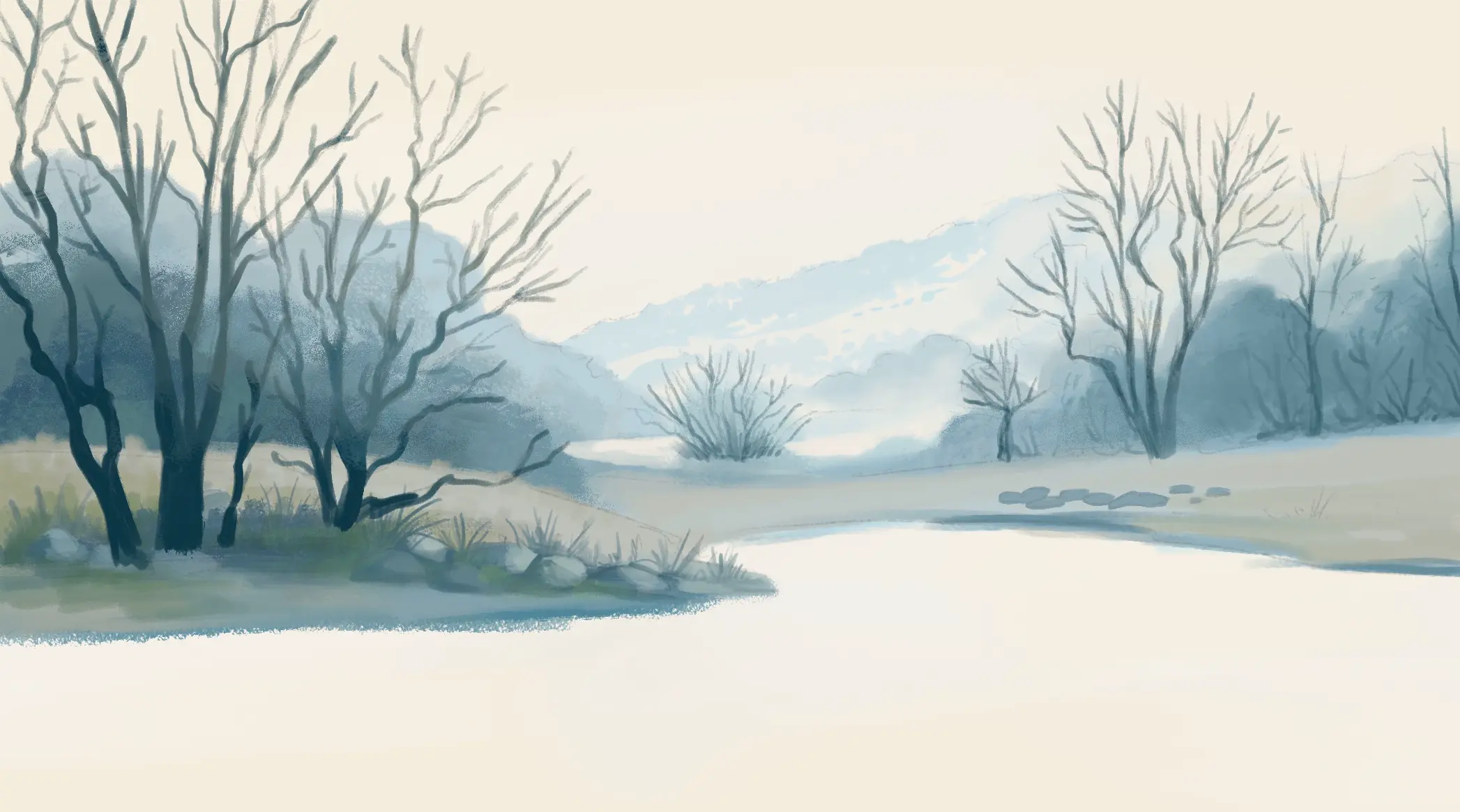
In order to add more details, I then proceed to draw the trees. I choose a dark blue for the base, then blend the colors with a green, followed by a beige. This helps suggest the mist and show the dense atmospheric depth.
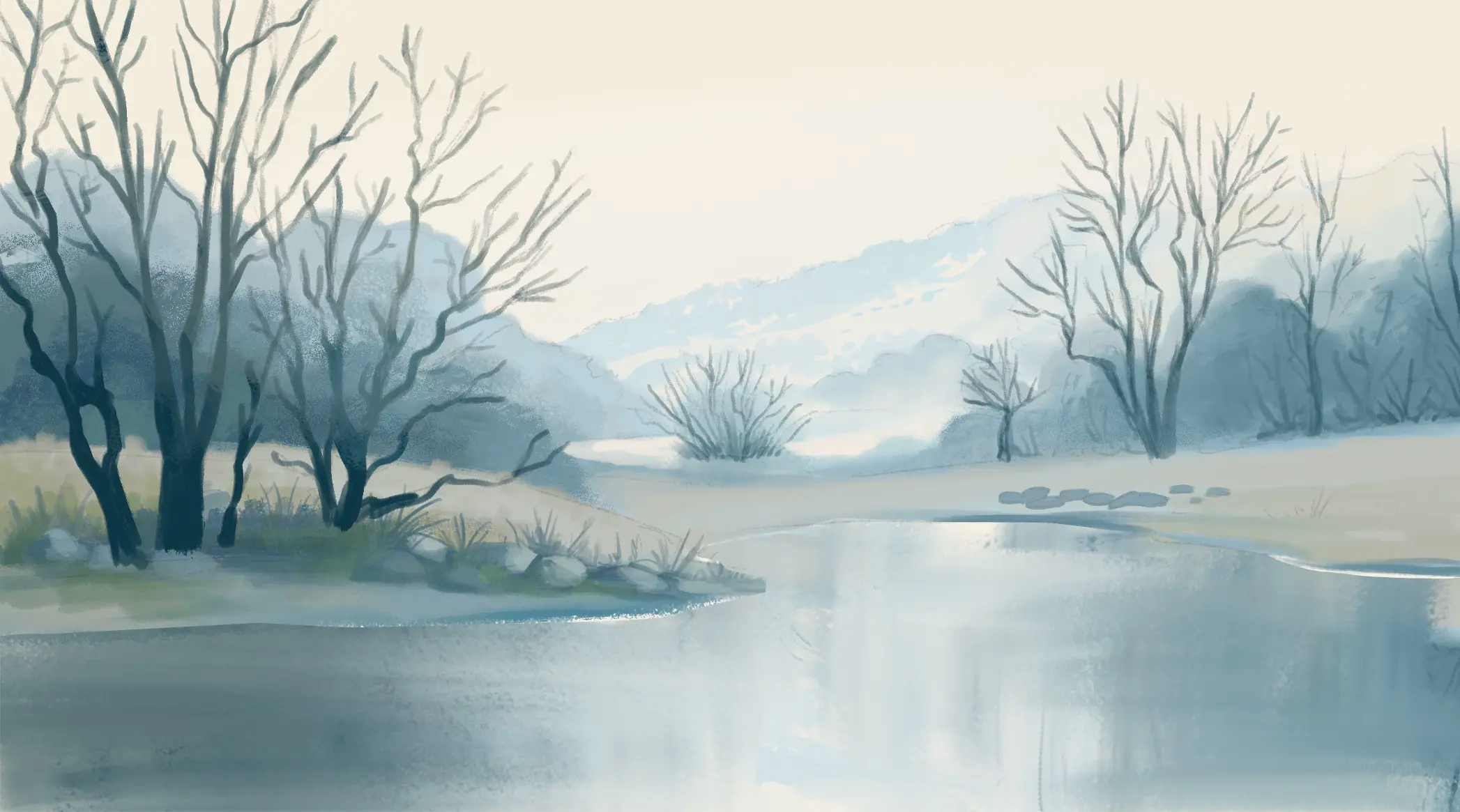
I add the frozen lake. To convey the impression of ice, I alternate the direction of the strokes, sometimes horizontal, sometimes vertical. However, I make sure that the edges remain soft so that the overall visual effect isn't too busy. As for colors, I choose shades similar to those of the various elements that should be reflected (trees, vegetation, sky, etc.).

To finish the drawing, I add some final details: lighter strands of grass, some reflections on the frozen lake, a bit of shadow on the sides of the lake, etc. This helps make everything coherent.
And there you have it, our winter landscape drawing is complete! As you have seen, it's not that technical. From the moment you choose a few significant elements (fog, bare trees, frost) and apply a range of cold colors, the wintry atmosphere can be immediately felt. I hope you enjoyed this article! 😊

